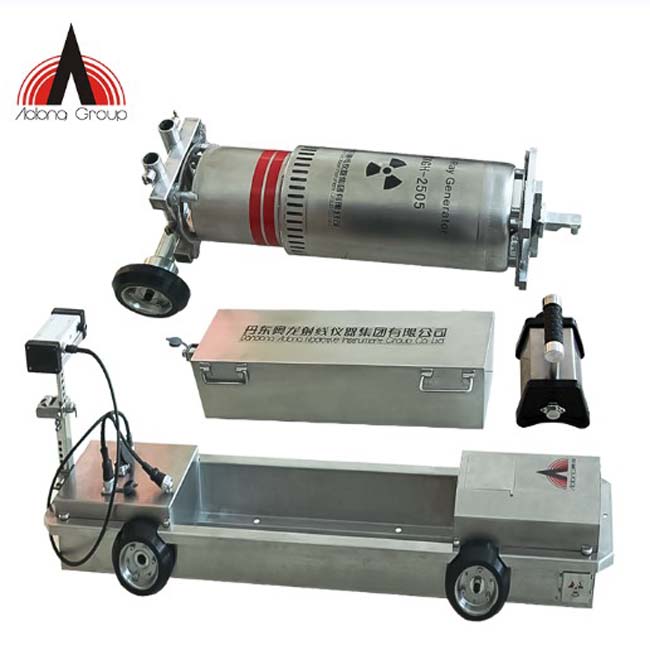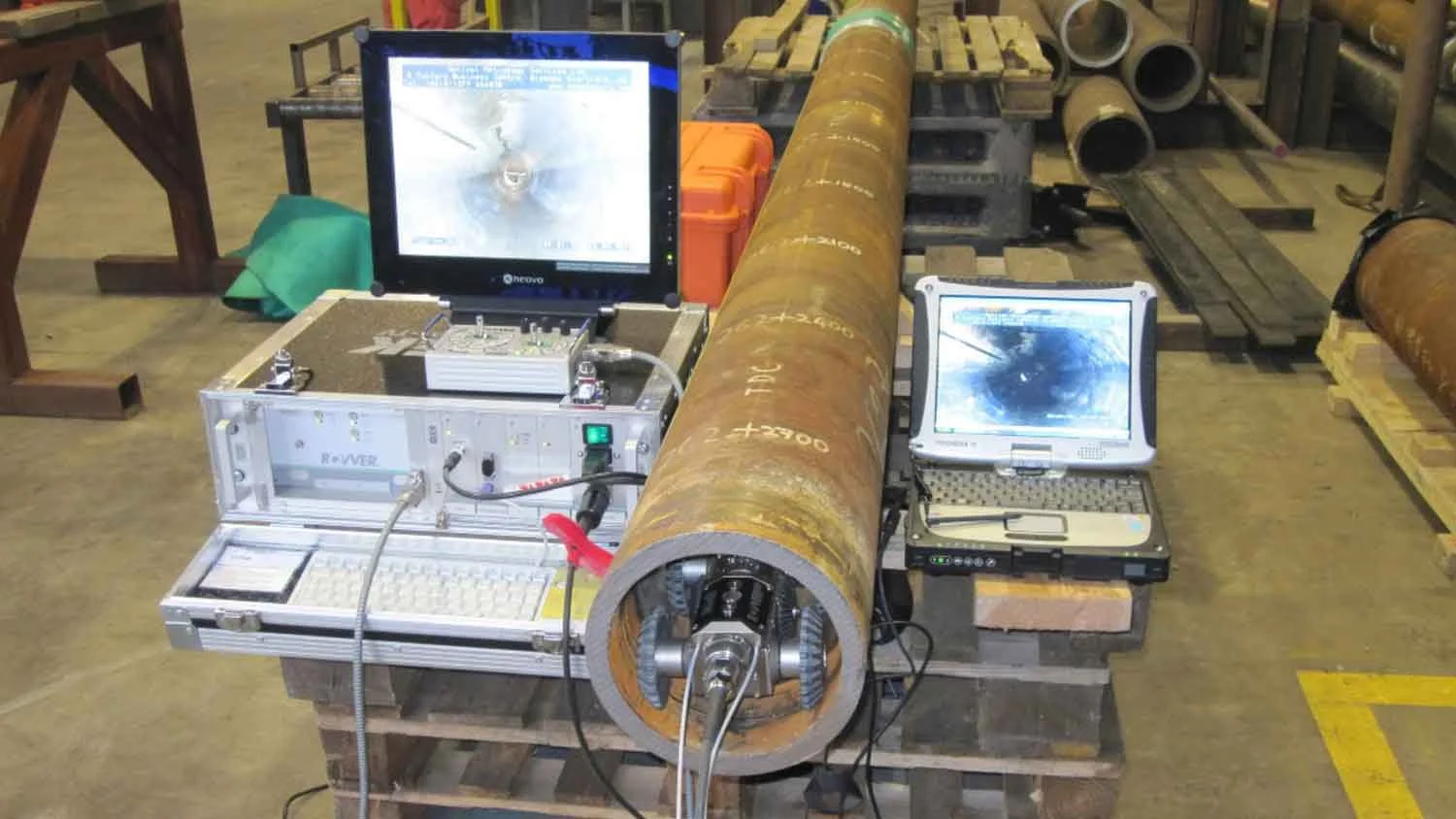Comprehensive Overview to Pipe Welding Assessment: Making Certain Honesty and Security in Pipe Building and Maintenance
The integrity and safety of pipelines are vital in today's infrastructure landscape, underscoring the vital duty of welding examination in pipe building and maintenance. Pipeline Welding Inspection. The complexities included in welding evaluation raising significant questions about industry criteria and the developing technologies that might redefine these practices.

Value of Welding Assessment
Welding assessment plays an essential duty in making certain the integrity and safety of pipe systems. It offers as a basic process that validates the quality and reliability of bonded joints, which are usually the most prone points in pipeline building and construction. Through methodical assessment, inspectors can recognize prospective defects such as cracks, porosity, and insufficient combination, which may endanger the structural integrity of the pipe.
The value of welding evaluation extends beyond simple compliance with sector requirements; it likewise safeguards public health and wellness and the environment. If failures occur, pipes carrying hazardous products position substantial dangers. Reliable examination methods assist stop leaks and tears, reducing environmental damage and protecting neighborhoods. Furthermore, complete inspections can improve the longevity of pipe systems, decreasing the need for expensive repairs and downtime.
In enhancement to ensuring security and conformity, welding examination fosters a society of top quality assurance within organizations. By prioritizing assessment throughout the welding process, companies can develop an online reputation for reliability and excellence, eventually bring about increased customer confidence and service opportunities (Pipeline Welding Inspection). Hence, the value of welding inspection can not be overstated in the context of pipeline building and upkeep
Key Welding Procedures
Various welding processes are employed in pipeline construction, each with its own advantages and applications. Among the most extensively made use of techniques are Protected Metal Arc Welding (SMAW), Gas Tungsten Arc Welding (GTAW), and Gas Metal Arc Welding (GMAW) SMAW is favored for its adaptability and capacity to execute well in numerous ecological conditions, making it suitable for area applications.
GTAW, often referred to as Tungsten Inert Gas (TIG) welding, is recognized for its ability to produce high-grade welds with superb control over warmth input, making it excellent for thin-walled pipes and stainless-steel products. GMAW, or Metal Inert Gas (MIG) welding, provides high deposition prices and is effective for large projects, frequently employed in the fabrication of pipelines in controlled atmospheres.
Additionally, Immersed Arc Welding (SAW) is made use of for its deep penetration and high performance, especially in the building and construction of large-diameter pipelines. Each of these procedures adds to the general honesty and safety and security of pipeline constructions, making it possible for welders to select one of the most proper technique based on product type, project requirements, and environmental conditions. Comprehending these vital welding procedures is important for effective pipe welding inspection.
Typical Problems and Their Influence

Porosity, defined by little gas pockets trapped within the weld, compromises the material and can bring about leakages. Fractures, which may occur as a result of thermal stress and anxieties or incorrect air conditioning, can result and propagate in architectural failure under pressure. Damaging, where the base steel is eroded along the weld grain, minimizes the efficient cross-section of the pipe, raising the danger of fracture.
Insufficient fusion occurs when the weld steel does not appropriately bond with the base metal, causing weak areas that may fail under tension. Slag incorporation, the entrapment of non-metallic product within the weld, can additionally weaken the joint's integrity. Determining and addressing these flaws early in the building and construction process is crucial to making sure the long-term dependability and safety of pipe systems, therefore safeguarding both the atmosphere and the facilities.
Inspection Tools and methods

Aesthetic evaluation is the initial line of defense, enabling examiners to recognize surface area irregularities, misalignment, or various other noticeable defects. Ultrasonic screening utilizes high-frequency acoustic waves to detect inner defects, giving precise deepness measurements and characterizing flaws without damaging the weld. Radiographic screening makes use of X-rays or gamma rays to create photos of the weld, allowing the recognition of interior gaps, cracks, or additions.
Magnetic fragment testing is especially efficient for spotting surface area and near-surface discontinuities in ferromagnetic products. This technique entails using a magnetic field and fine iron fragments to the weld, disclosing issues via the build-up of bits at imperfection sites.
Along with these techniques, specialized tools such as automated ultrasonic screening tools and digital radiography systems enhance assessment precision and efficiency, making sure a comprehensive examination of pipe welds throughout building and maintenance.
Ideal Practices for Conformity
Abiding by finest methods for conformity in pipe welding evaluation is critical for making sure the honesty and safety and security of the framework. Organizations must establish an extensive high quality administration system that lines up with market requirements such as ASME, API, and AWS. This consists of developing comprehensive welding procedures that specify the materials, methods, and credentials required for welders.
Regular training and qualification of examination personnel are vital to maintain high competency degrees. Examiners must recognize with different non-destructive screening (NDT) methods, including ultrasonic screening, radiographic testing, and visual inspection, to properly determine potential defects.
Documentation plays a vital role in conformity; preserving precise documents of evaluations, weld procedures, and personnel credentials helps to make certain traceability and accountability. Scheduled audits and reviews of welding methods should be performed to identify areas for improvement and ensure adherence to developed procedures.

Conclusion
To conclude, the execution of rigorous welding examination methods is extremely important for guaranteeing the integrity and security of pipe construction and upkeep. By determining issues and using advanced inspection methods, companies can dramatically enhance the high quality of welded joints. Following ideal methods fosters conformity with sector criteria, ultimately guarding public health and wellness and Get the facts avoiding ecological hazards. Constant improvement in inspection processes will certainly add to the longevity and reliability of pipe systems, emphasizing the essential function of welding assessment in the industry.
The honesty and safety and security of pipelines are vital in today's framework landscape, underscoring the important role of welding evaluation in pipe building and upkeep. Recognizing these essential welding procedures is necessary for efficient pipeline welding assessment.
Sticking to finest techniques for conformity in pipe welding inspection is vital for ensuring the integrity and security of the facilities.In final thought, the application of rigorous welding evaluation procedures is vital for making sure the honesty and safety and security of pipe construction and upkeep. Continual renovation in read this article examination procedures will certainly add to the longevity and integrity of pipe systems, emphasizing the essential duty of welding examination in the market.